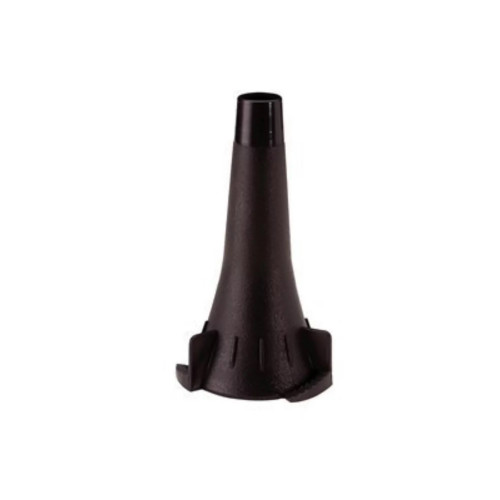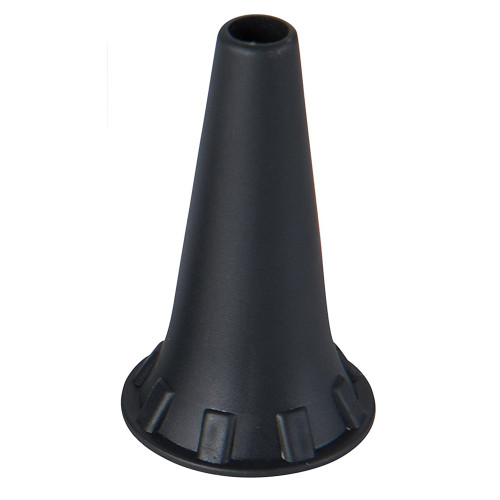-

Ortec
Ortec Disposable Ear Speculum Tip
The Ortec® Ear Speculum Tip is made to be compatible with most otoscopes. These plastic disposable tips help to keep the otoscopes clean of the debris that can come from the ear. One pack includes 1000 speculum tips.Has a rounded tip Made for single use...
As low as $40.26 -

ADC
ADC Disposable 4.25 mm Ear Speculum Tip 850 per Box
Package Count: 850. American Diagnostic Corp 4.25 mm KleenSpec® Disposable Ear Specula for Diagnostic Otoscopes. KleenSpec Disposable Specula are economical and convenient. KleenSpec® Disposable Specula are made from non-toxic plastic.Disposable 4.25...
$55.62 -

McKesson
McKesson Halogen Bulbs - for Illuminators, Diagnostic Lamp
For 07800 Fits Vaginal Speculum Illuminator
$37.64 -

McKesson
McKesson Halogen Lamp Bulbs - for Exam Lamps, Otoscopes - 12 Volts, 35 Watts
For 04200 12V Halogen Fits Exam Lamp
$40.50 -

McKesson
McKesson Halogen Bulbs - for Diagnostic Lamp, Illuminators
Replacement halogen bulb for vaginal specula 08800.For 08800 For Vaginal Specula
As low as $42.95 -

McKesson
McKesson Specula Dispenser White Plastic Wall Mount
Instructions and 2-sided tape included Use with McKesson Otoscope Tips 2.5 mm (MFR # 16-156) and 4.0 mm (MFR # 16-157) Wall mounted Semi-transparent front 5.5-inch x 8-inch (14 cm x 20 cm) Holds up to 200 McKesson Otoscope Tips
As low as $37.81 -
 As low as $29.99
As low as $29.99 -

ADC
ADC Otoscope Ear Speculum Replacement Tips, Disposable Plastic
Package Count: 850. Use the ADC® Ear Speculum with an otoscope. The funnel shaped accessory is inserted into the ear and aids in examining for infections, wax buildup or an object in the ear canal. One box includes 850 disposable ear speculums.For use...
$53.83 -

McKesson
McKesson Small Halogen Light Bulb - 3.5 Volts, 2.73 Watts
Replacement halogen bulb for otoscope.For 06500 Fits Welch Allyn Otoscope 23810, 23820; Macroview
As low as $23.37 -

McKesson
McKesson Halogen Bulb for Ophthalmoscope/Illuminator 3.5 V/2.5 Watts
Replacement halogen bulb.For 03000 Fits Ophthalmoscope, Illuminator
As low as $43.25 -

McKesson
McKesson Halogen Bulb for Ophthalmoscope/Illuminator 3.5 V/0.72 Watts
Replacement bulb for the 03100 Otoscope.For 03100 Fits Otoscope, Illuminator
As low as $25.99 -

McKesson
McKesson Otoscope Tips for Ear Exams, Non-Sterile Disposable Plastic
McKesson Otoscope Tips are designed to be compatible with most existing instruments. The disposable tips are made from a high-quality medical grade plastic, and are designed for secure fit, ease of caregiver use, and patient hygiene.Fits most major brand...
As low as $34.80
Otoscopes

Otoscopes Category Page
Shop Simply Medical’s otoscope selection for all your medical office needs. We have otoscope accessories, including tips for ear exams and replacement otoscope halogen bulbs available for purchase.
What is an Otoscope?
An otoscope, also known as an auriscope, is the device used during an otoscopy. Otoscopies are clinical examinations where medical professionals look at the ear and its structures, which include the external auditory canal, tympanic membrane, and middle ear. Doctors and nurses use otoscopes during regular check-ups to make sure patients are healthy. They also use otoscopes when a client has specific ear complaints.
What Happens During an Otoscopy?
During an otoscopic procedure, a healthcare professional gently inserts the cone of the otoscope into a patient’s external ear canal. Otoscopes contain both a light and magnifying lens to help the doctor accurately see and evaluate the health of the visible auditory structures.
Who Uses Otoscopes?
The typical otoscope users are specialists like ear, nose, and throat physicians (ENTs), and primary care providers. Medical offices usually have multiple speculums in various sizes that attach to the otoscope. The provider should select the largest speculum that the patient’s ear can accommodate, as this offers maximum lighting for the best possible ear visualization.
It is recommended that users hold the otoscope like a pen in between their first and second fingers. The otoscope is generally held in the right hand when examining the patient’s right ear, and the left hand when assessing the left ear. The otoscope user should place their free fifth finger of the hand that’s holding the otoscope against the patient’s cheek as a way to brace their hand during the procedure.
Why is an Otoscopy Important?
As detailed in a book snippet available via the National Library of Medicine, “Examination of the tympanic membrane and middle ear by otoscopic examination can help providers diagnose a wide variety of conditions, including acute otitis media, traumatic perforation of the tympanic membrane, and cholesteatoma. Delayed diagnosis of various pathologies of the ear can facilitate progression to more serious conditions, highlighting the importance of otoscopy.”
In layman’s terms, it’s just another way of making sure patients are healthy. We often forget about ear health, but it’s as important as any other system of the body!
What Do Doctors See When Using an Otoscope?
The following descriptions of an auditory canal and ear drum describe what medical professional would typically see in a normal, healthy ear during an otoscopy.
Shop Simply Medical’s otoscope selection for all your medical office needs. We have otoscope accessories, including tips for ear exams and replacement otoscope halogen bulbs available for purchase.
What is an Otoscope?
An otoscope, also known as an auriscope, is the device used during an otoscopy. Otoscopies are clinical examinations where medical professionals look at the ear and its structures, which include the external auditory canal, tympanic membrane, and middle ear. Doctors and nurses use otoscopes during regular check-ups to make sure patients are healthy. They also use otoscopes when a client has specific ear complaints.
What Happens During an Otoscopy?
During an otoscopic procedure, a healthcare professional gently inserts the cone of the otoscope into a patient’s external ear canal. Otoscopes contain both a light and magnifying lens to help the doctor accurately see and evaluate the health of the visible auditory structures.
Who Uses Otoscopes?
The typical otoscope users are specialists like ear, nose, and throat physicians (ENTs), and primary care providers. Medical offices usually have multiple speculums in various sizes that attach to the otoscope. The provider should select the largest speculum that the patient’s ear can accommodate, as this offers maximum lighting for the best possible ear visualization.
It is recommended that users hold the otoscope like a pen in between their first and second fingers. The otoscope is generally held in the right hand when examining the patient’s right ear, and the left hand when assessing the left ear. The otoscope user should place their free fifth finger of the hand that’s holding the otoscope against the patient’s cheek as a way to brace their hand during the procedure.
Why is an Otoscopy Important?
As detailed in a book snippet available via the National Library of Medicine, “Examination of the tympanic membrane and middle ear by otoscopic examination can help providers diagnose a wide variety of conditions, including acute otitis media, traumatic perforation of the tympanic membrane, and cholesteatoma. Delayed diagnosis of various pathologies of the ear can facilitate progression to more serious conditions, highlighting the importance of otoscopy.”
In layman’s terms, it’s just another way of making sure patients are healthy. We often forget about ear health, but it’s as important as any other system of the body!
What Do Doctors See When Using an Otoscope?
The following descriptions of an auditory canal and ear drum describe what medical professional would typically see in a normal, healthy ear during an otoscopy.
-
Auditory canal:
- Some hair, often with yellow to brown earwax Ear drum:
- Pinkish gray color, translucent and in neutral position
- Malleus lies in oblique position behind upper part of drum
- Mobile with air inflation
